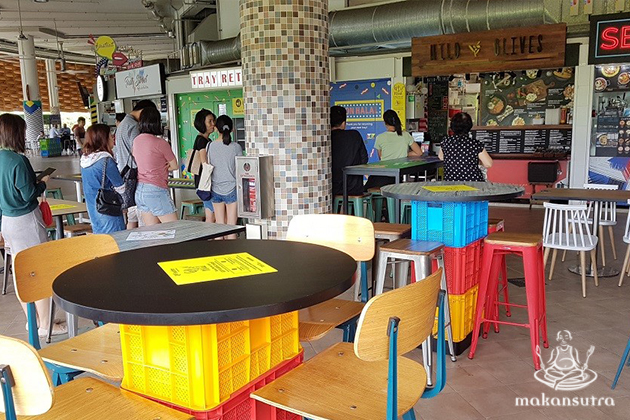
Not Social Enterprise Hawker Centres
By KF Seetoh - Tuesday, Aug 28, 2018
Finally, our leaders are recognising how great a cultural icon the hawker centres are, not just as a building or the food served, but of the culture and heritage it represents. It resonates across folks of all creed, standing, race, religion and colour. Even our PM, who now wants our Hawker Centre food culture to be enshrined as a Unesco Intangible Heritage and Culture icon, lines up for this makan at a hawker centre with his wife. And he spoke also about the humble intents of the new Social Enterprise Hawker Centres (10 to be built) and how it will bond Singaporeans even more. But before we move any further ahead, I have to flag some concerns about how it’s run and what they mean by Social Enterprise.
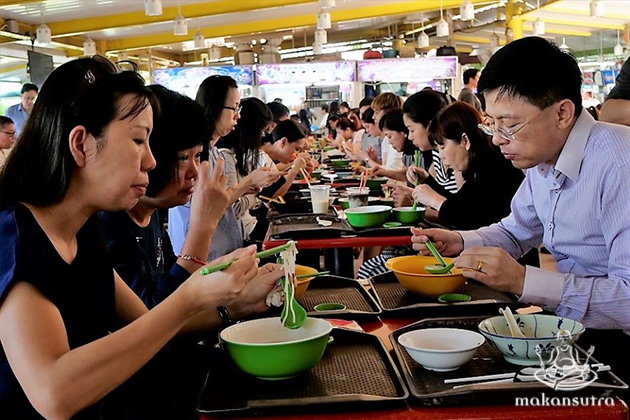
At best, the term social enterprise is murky. Check Wikipedia https://en.wikipedia.org/wiki/Social_enterprise and you will know what I mean. The best version I came across is “A social enterprise is a cause-driven business, whose primary reason for being is to improve social objectives and serve the common good.” , from http://www.thegoodtrade.com/features/what-is-a-social-enterprise folks. And in that sense, our Social Enterprise Hawkers Centres, are not, in many ways.
I had the sad eye opening chance to glance at the contract agreements of some new hawkers which have been installed at our new Social Enterprise Hawker Centres (SEHC). I heard whispers and murmurs in the market regarding the operational practices of some private companies, registered as a social enterprise organisation, running the newly government built hawker centres like commercial food courts. Up to 10 are planned for since 2011. In that year, the government formed a Panel to address the concerns of the community regarding the future and continuity of hawker centres, as it serves a big part of our lifestyle and “to continue the provision of affordable food” for the less privilege and poorer folks in our midst. Very noble indeed and I was looking forward to see how this will play into our future and craft new, proud and interesting narratives in my musings on this development.
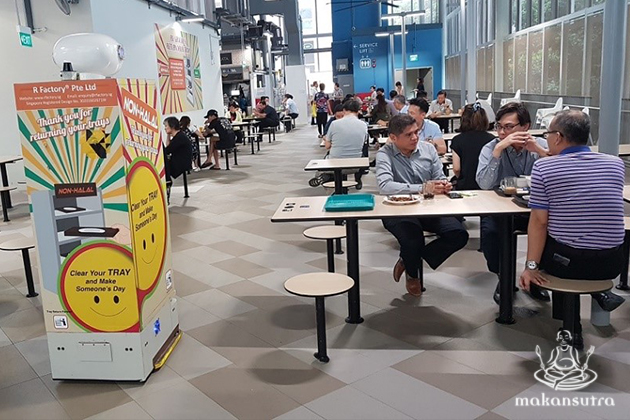
In fast motion perspective: private social enterprise companies will now run these hawkers centres, appointed by the National Environment Agency’s (NEA). They have to adhere to some rules that serve the bigger social enterprise goals and objectives. The entire recommendation and report by the Hawker Centres Consultation Panel is detailed here https://www.mewr.gov.sg/docs/default-source/default-document-library/pressrelease/pcp-recommendation-report.pdf, with a very humbling and diligent 58 pointers recommended and accepted by the government.
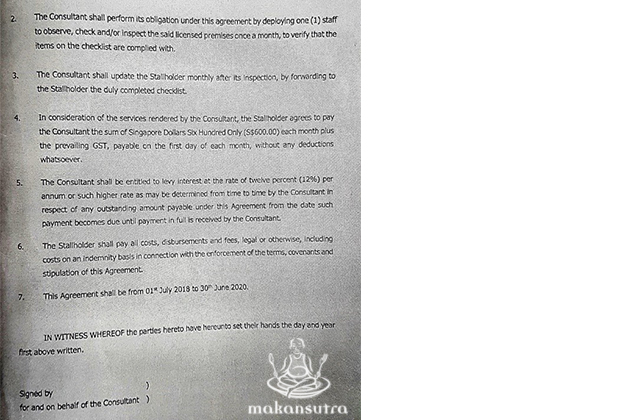
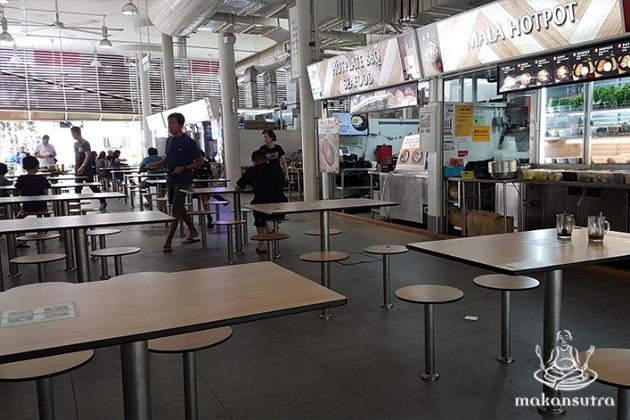
But the spanner in the works is a point in the report that allows these social enterprise operators to determine their own business and operation models (see Management Model from bottom of pg 1). They operate the new hawker centres like a hard core commercial Food Court management system. Hence, I am seeing some issues that raises some concerns. For starters, the rental. These hawkers in the new hawker centres pay in total (with a laundry list of extra services and charges), an average of $4000, more than what it cost the highest bidder in Maxwell Hawker Centre, arguably the most popular hawker centre in Singapore- where it hovers between two to three thousand dollars a month in total. Mawell, sited in prime town area, sees breakfast, lunch, dinner and weekend crowds, unlike these far flung residential area where the SEHC are sited. They pray for a weekday crowd (many residents in those areas go to work and may have dinner by the time they come home). They rely on weekend buzz but it is very fragile, what with the high operation, rent and manpower costs. Also, “newbies” (if you choose that scheme), get a stall that is pre-outfitted with the relevant equipment with grants from the Govt to “help and assist” them along. But they pay similar rents and charges as the rest.
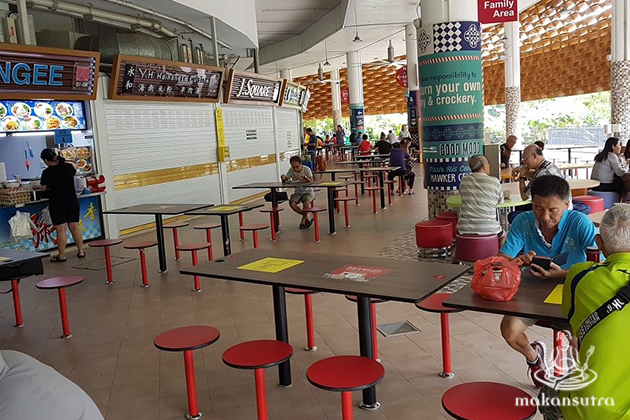
This is baffling and is totally “anti-ideals” of the report. I know of some hawkers who will be quitting at the earliest chance as they know even private coffeeshop stalls in better locations offer cheaper rents with less stringent rules. At least one stall, after a year in a SEHC has already booked a booth in prime CBD area for about the same total rental and operation cost he currently pays and I don’t think he has much reason to return to the north, when he sees the kind of footfall the town has to offer. In his words “social enterprise hawker centres are not sustainable. Just you wait, a lot of such hawkers are calling it quits soon.”
The folks at social enterprise food centres pay a total of $4000 pmth on average. The shocking facts, (just some) seen in some of the contracts, include compulsory payments for
– “coin changing service”,
-a Gross Turnover Profit percentage (they take a percentage of your overall takings each month or basic rents, whichever is higher)
-separate charges for crockery washing, collection and return (despite efforts and cost to facilitate self tray-return)
-and this brazen clause (see image) that hawkers pay the management $600 a month to have them spot check their food quality and operation ( in short, charge the hawkers to do what they naturally do anyway). As if they know better than the hawkers how to cook and operate.
-They also have monetary penalties like in a food court model for closures and they are expected to open 8-12 hours a day (minus preparation time). The law only allow people to work up to 12 hours a day. The old NEA hawker centres will allow emergency closures like for health, religious holidays and personal issues, just let them know.
-Despite these startling high cost of operation and management fees, they are expected to offer at least one dish at below $3 in the menu.
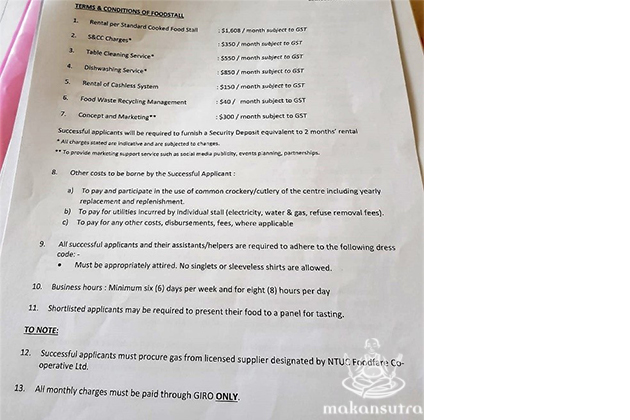
I have no background information regarding the partnership between NEA and the operators- who charges what and how much. But I sense some figures here need to be redressed to better address the big picture goal of providing real social enterprise service for the community. It would help if NEA and the operators are transparent about these agreements, as it’s a non-profit public service after all.

So I ask, how are the true intents behind these so called SEHC being delivered. Did they misinterpret the values and goals listed, or is there a lack of vision and compassion in execution. Because, as it is, the existing NEA run public hawker centres are way more free market and “social enterprise” in practice than these fancy new SEHC. Operating public hawker centres are very different from running private food courts. They twain should never meet in the interest of real social enterprise objectives. If such cost at SEHC, meant to be cheaper and affordable for vendor and customers prevail, then it will have a domino effect on all other F&B rentals in Singapore.
So before we shout to Unesco about how our hawker centres are also humbling entry level business opportunities for the poorer folks in our midst out to offer cheaper meals to the public and bond them, I urge the minds at the top to rethink this very worthwhile culture of Singapore and to keep it relevant and evolve organically for the next generation. I think the original noble intents were lost in translation in management, let’s get this back on track please.
(p.s.. I have interviewed stall owners and observed the centres, but left out the names as this is not about them, it’s about the bigger issues on relevance. Currently, another organisation has taken over the management of the iconic Old Airport Road Hawker Centre. Some cost have gone up and they all now have a contract which will later allow open market operation concepts to pervade. At least 5 stalls that perhaps didn’t perform as well, have suddenly called it quits, and it’s ironic, because these are the ones that social enterprise hawker centres were built to help.)
KF Seetoh is the founder of Makansutra which inks heritage street food guides, operate food markets, produce international food tv shows, and he is also the curator and creator of the World Street Food Congress.


